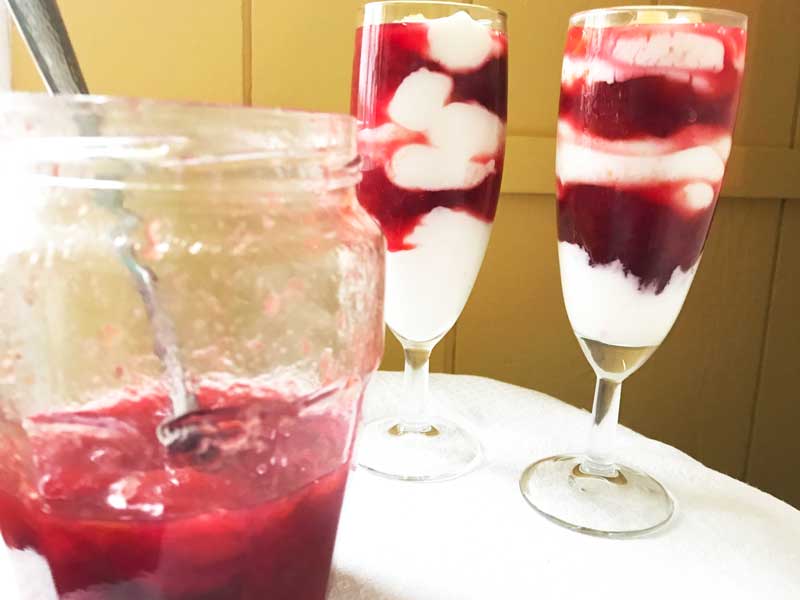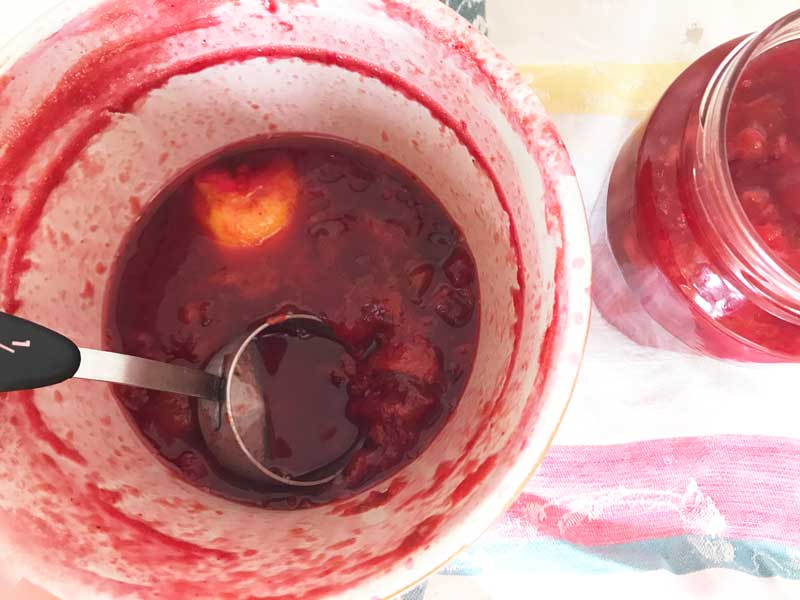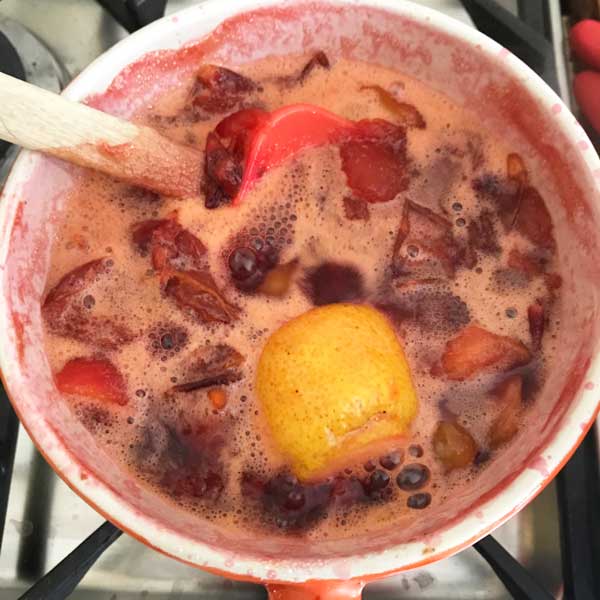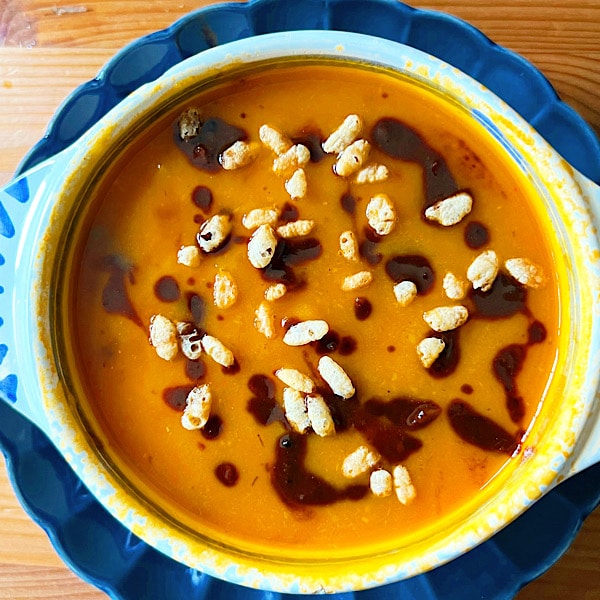
I have been wracking my brain for a way to make ‘compote’ sound sexy. Exciting. Like something you want to jump out of your chair and make immediately. And I keep coming up with…nothin’. Probably because I would never have jumped up out of my chair to make compote, until this week.
The trouble is, ‘compote’ tends to sound a little too old-fashioned and homey, though not as bad as ‘stewed fruit,’ which is pretty much the same thing. I Wikipedia-ed ‘compote’ and read it “is a dessert originating from medieval Europe…” Meh. Medieval may work with something like roast meat (Henry VIII!) or mead (Honey wine drunk by the troubadours!), but it doesn’t come across as all that enticing when paired with dessert.
All word associations aside, the real issue is that compote all by itself remains kinda boring. But, when you start to pair compote with other ingredients, well, it takes on a whole new sweet-tart, fruit-laced, jewel-toned life.
Compote on hot cereal, granola or pancakes makes a lusciously healthy alternative to sugar, honey, syrup or jam. Compote layered with yogurt makes a bright, light parfait (see above). Compote poured over pound cake or ice cream looks and tastes simply gorgeous. Compote tucked beneath a crumble topping makes a 20-minute dessert. And compote folded into a circle or square of puff pastry becomes a hot, juicy turnover or hand pie.
I could go on…and I probably should, because I’m on a compote-making tear right now. It’s is the perfect way to prolong the life of highly-perishable summer fruit, like the big bag of wild plums a friend gave me (when I really only wanted a few).
The only real kitchen skill you need to making compote is prepping the fruit (peeling, pitting, seeding, and/or hulling). The only ingredients you need are fruit (any type), sugar, and water, though you can jazz things up with anything from lemon juice, cinnamon, and vanilla to chopped nuts and dried fruit. Sweetening is a matter of personal taste and will vary wildly depending on the ripeness of the fruit. Always start on the low end of the recommended amounts, then adjust to taste after the compote has cooled. (This is not much of a skill. If you can sweeten your morning cereal to taste, you can sweeten a compote.)

Fruit Compote
2 lb. (1 kg.) peeled, pitted or seeded fruit, such as plums, peaches, cherries, apples, or pears, halved or cut into wedges or chunks as desired
¾ cup to 1 cup (160 to 220 g.) sugar, or more to taste
¼ cup water
½ organic lemon
Optional flavorings: ½ cinnamon stick, 1 vanilla bean, halved, seeds removed, 3 coins fresh ginger,
Optional add-ins: ½ to 1 cup dried nuts or fruit, diced
Combine the fruit, sugar, and water in a medium saucepan. Squeeze the lemon into the mixture, remove the seeds from the lemon half, and add it to the fruit. Bring the mixture to a boil. Reduce the heat to low, and simmer 15 to 20 minutes (for apples or pears) or 30 to 45 minutes (for peaches and plums), or until the fruit is soft and the juices are thickened. Cool. Remove the lemon half and any optional flavoring (cinnamon stick, vanilla bean, ginger, etc.). Adjust the sweetness, if desired. Transfer to a lidded container, and store in the fridge for up to 2 weeks.



This looks plumb delicious ! Gathering wild fruit is one of my favorite pass-times. I am partial to crusty piece of bread with apple compote… I tastes like pie! Seeing as I have tons of apples in my trees every year it goes without saying that most of my spare time in October is spent “compoting”. Rhubarbe is a nice addition for anyone who doesn’t know what to do with the abundance… As well as blackberries and those little Northern peaches that never get very sweet here but make for pure compote heaven in the middle of the winter.
Compoting! I love it!